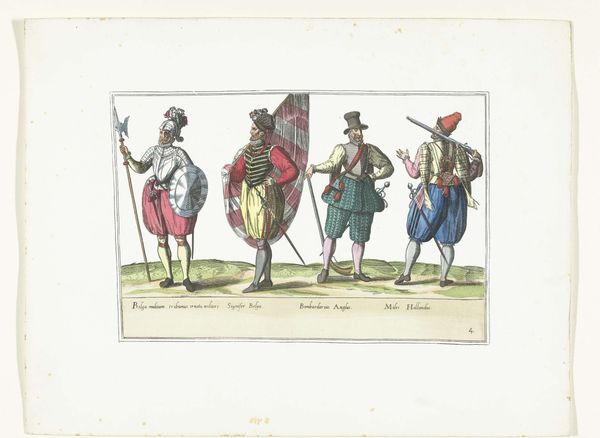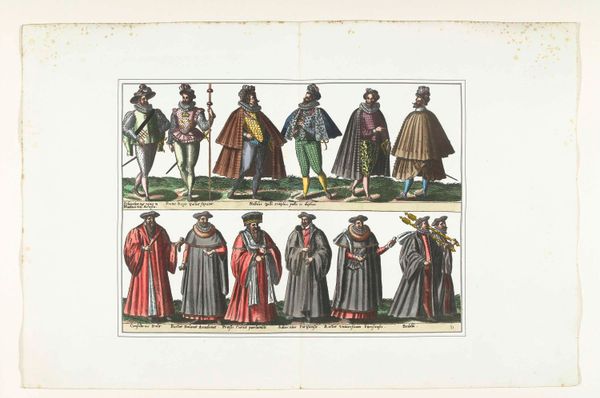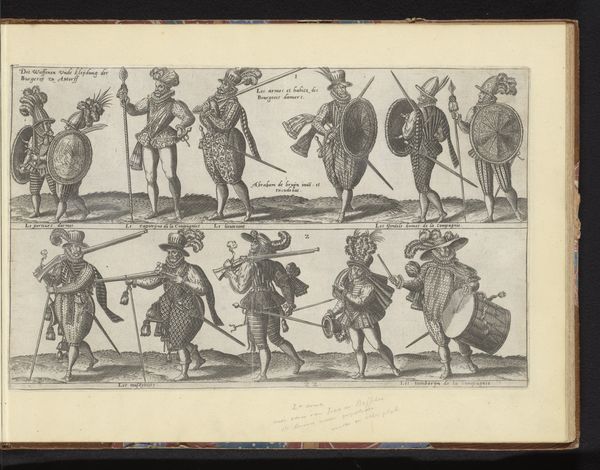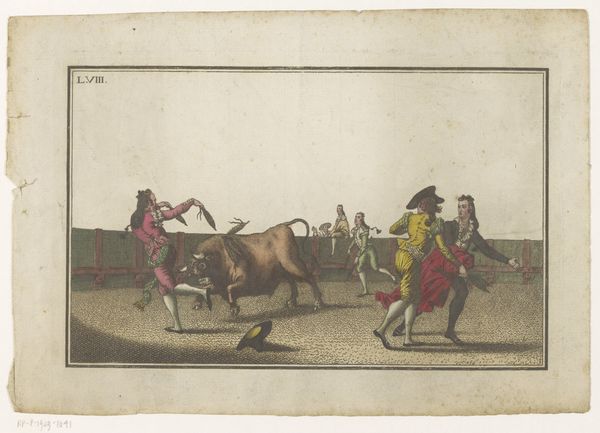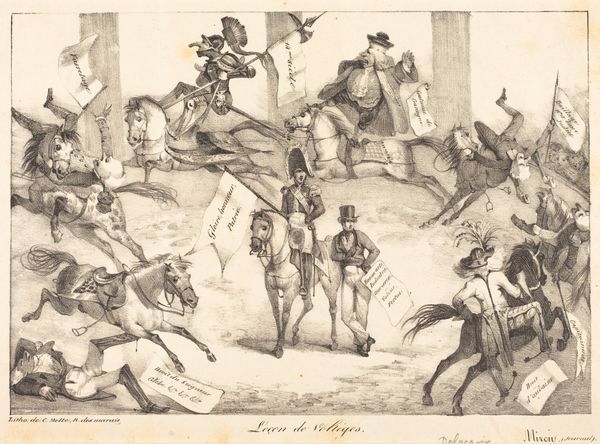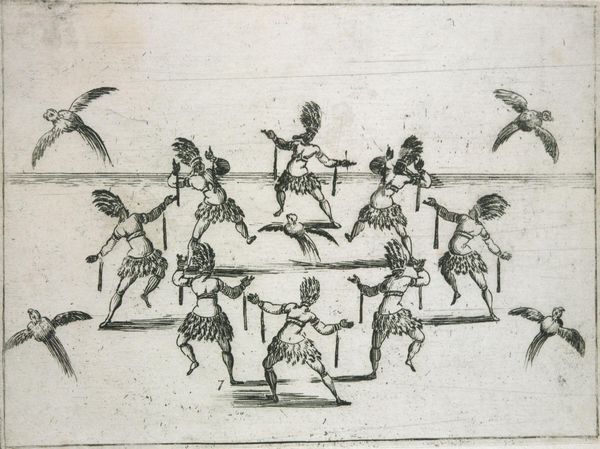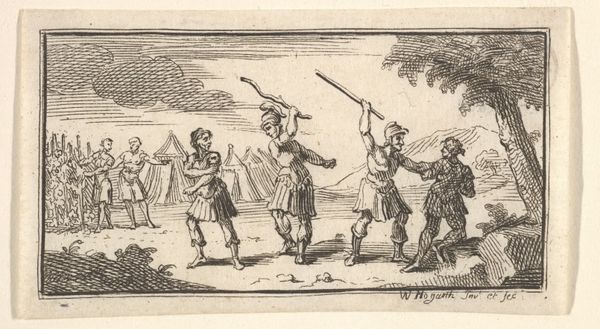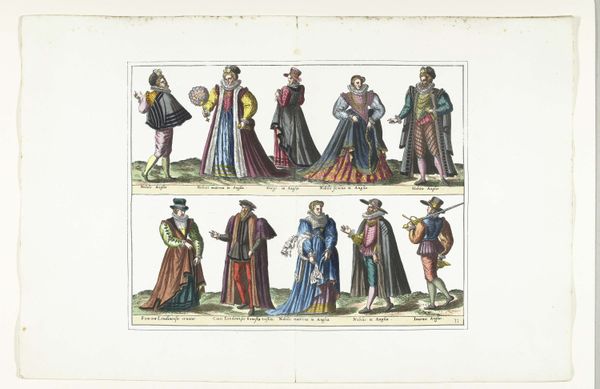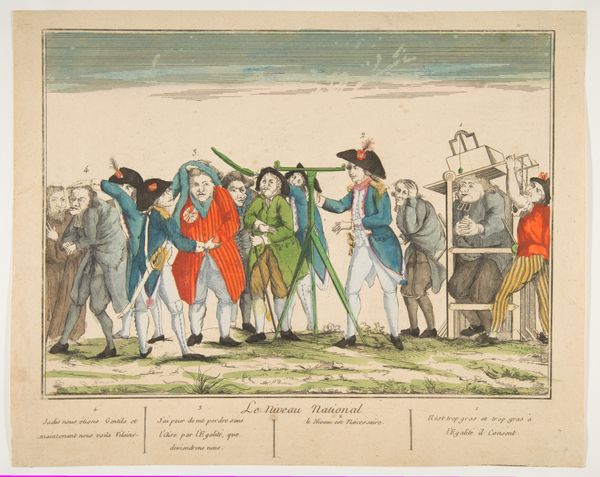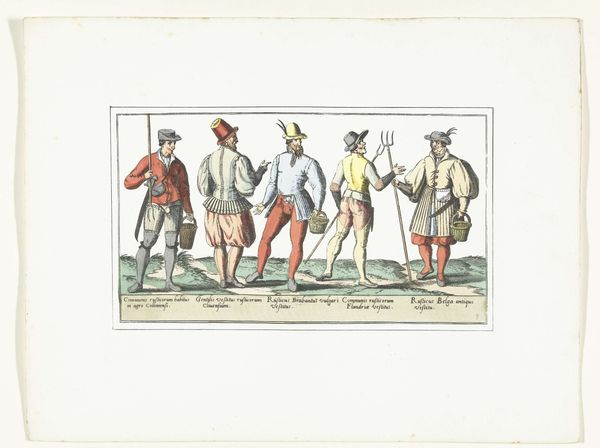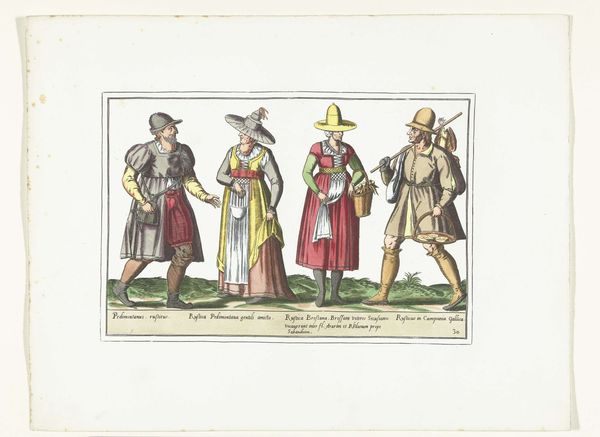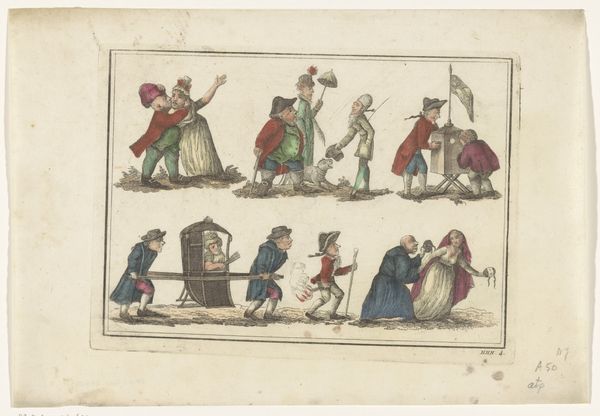
Dubbele plaat met twaalf gewapende burgers in uniform volgens de mode in Antwerpen, ca. 1580 1872 - 1875
0:00
0:00
anonymous
Rijksmuseum
mixed-media, print, engraving
#
portrait
#
mixed-media
#
medieval
# print
#
figuration
#
group-portraits
#
watercolour illustration
#
genre-painting
#
history-painting
#
engraving
Dimensions: height 360 mm, width 547 mm
Copyright: Rijks Museum: Open Domain
Editor: This is an engraving from 1872 to 1875, of a print titled "Dubbele plaat met twaalf gewapende burgers in uniform volgens de mode in Antwerpen, ca. 1580." The artist is anonymous and the piece is a colourful group portrait depicting armed citizens. What's fascinating is the way each figure seems so self-contained, despite being part of a larger group. What kind of story do you think these figures tell? Curator: This print encapsulates a powerful narrative about civic identity. Note the uniformity, yet also the subtle differentiations in dress. This reflects the tension between communal responsibility and individual expression. These details offer visual cues – emblems of their social standing. Consider their weaponry: are they for display, defense, or perhaps symbols of power within the community? Editor: I see that! It's like they are making a statement about the status of their role. And is the bright colour indicative of something or to make them seem modern in this art piece? Curator: The use of vibrant colour serves a dual purpose. On one hand, it recalls the elaborate displays of wealth and status that characterized Renaissance society. On the other, it imbues the scene with a sense of timelessness – a reminder that certain aspects of human nature, like the desire for recognition and belonging, transcend historical eras. Editor: So the print captures this balance between individual identity and belonging through not only colour, but costume, weaponry, and status? Curator: Precisely! This work functions almost as a psychological profile of Antwerp society in the late 16th century, doesn't it? How public image, group dynamic, and societal stability were interlinked and performed daily. It uses this visual memory as an expression. Editor: I had not considered the performance part of the memory aspect. That opens so much interpretation, thinking about cultural expectations and performance of character! Curator: It also reminds us that even in supposed group settings, there can still be very personal projections, doesn’t it?
Comments
No comments
Be the first to comment and join the conversation on the ultimate creative platform.
